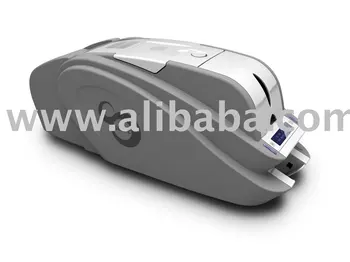Ï, lowercase ï, is a symbol used in various languages written with the Latin alphabet; it can be read as the letter I with diaeresis or I-umlaut.
Hp 2130 Printer Driver Download
Log in to i-Ready®, online assessment and instruction that helps teachers provide all students a path to proficiency and growth in reading and mathematics. Printer Drivers Free Windows Printer Driver Downloads for Thermal Label Printers, Card Printers, and Other Specialty Printers. Drivers by Seagull™ make it easy to print labels, cards and more from any true Windows program. We have been creating printer drivers for more than 20 years. I-94 is a place for U.S. Visitors to find travel records.

In Afrikaans, Catalan, Dutch, French, Galician, Welsh, Southern Sami, and occasionally English, ⟨ï⟩ is used when ⟨i⟩ follows another vowel and indicates hiatus (diaeresis) in the pronunciation of such a word. It indicates that the two vowels are pronounced in separate syllables, rather than together as a diphthong or digraph. For example, French maïs (IPA: [ma.is], maize); without the diaeresis, the ⟨i⟩ is part of the digraph ⟨ai⟩: mais (IPA: [mɛ], but). The letter is also in DutchOekraïne (pronounced [ukraːˈinə], Ukraine), and English naïve (/nɑːˈiːv/ or /naɪˈiːv/).
In German and Hungarian, ï does not belong to the alphabet.
In scholarly writing on Turkic languages, ⟨ï⟩ is sometimes used to write the close back unrounded vowel/ɯ/, which, in the standard modern Turkish alphabet, is written as the dotless i ⟨ı⟩.[1] The back neutral vowel reconstructed in Proto-Mongolic is sometimes written ⟨ï⟩.[2]
In the transcription of Amazonian languages, ï is used to represent the high central vowel [ɨ].
It is also a transliteration of the rune ᛇ.
Computing[edit]
Lowercase ï occurs in the sequence , which is the Unicodebyte order mark in UTF-8 misinterpreted as ISO-8859-1 or CP1252 (both common encodings in software configured for English-language users). Thus, it tends to indicate that any following mojibake can be corrected by reinterpreting the data as UTF-8.
| Preview | Ï | ï | ||
|---|---|---|---|---|
| Unicode name | LATIN CAPITAL LETTER I WITH DIAERESIS | LATIN SMALL LETTER I WITH DIAERESIS | ||
| Encodings | decimal | hex | decimal | hex |
| Unicode | 207 | U+00CF | 239 | U+00EF |
| UTF-8 | 195 143 | C3 8F | 195 175 | C3 AF |
| Numeric character reference | Ï | Ï | ï | ï |
| Named character reference | Ï | ï | ||
| EBCDIC family | 119 | 77 | 87 | 57 |
| ISO 8859-1/2/3/4/9/10/14/15/16 | 207 | CF | 239 | EF |
See also[edit]
References[edit]
- ^Marcel Erdal, A Grammar of Old Turkic, Handbook of Oriental Studies 3, ISBN9004102949, 2004, p. 52
- ^Juha Janhunen, ed., The Mongolic LanguagesISBN0415681545, p. 5
Hp Drivers For Printers
Î, î (i-circumflex) is a letter in the Friulian, Kurdish, Old Malay and Romanian alphabets. This letter also appears in French, Turkish, Italian, Welsh and Walloon languages as a variant of letter “i”.
Afrikaans[edit]
In Afrikaans, î is a punctuated form of i: wîe, the plural of wig ('wedge').

French[edit]
Î is a letter which appears in several French words, like naître (to be born), abîme (abyss), maître (master), (crème) fraîche and more. Unlike Â, Ê, and Ô, the circumflex does not alter the pronunciation of î or û.
The circumflex usually denotes the exclusion of a letter (usually an s) that was in a prior version of the word:

- voster became vôtre.
- abismus became abisme and then abîme.
- magister became maistre and then maître.
The 1990 spelling reforms removed the accents if they are not required to distinguish between homonyms and so naitre, abime, maitre and fraiche no longer take the circumflex. Vôtre, however, (meaning 'your one' as a pronoun) uses the circumflex to distinguish it from votre (meaning 'your' as a possessive determiner).
Friulian[edit]
Î is used to get a longer value of I, becoming /iː/. It can be found for example in all verbs of the fourth conjugation: pandî/paɳ'diː/, (to revel). Another use of Î (and also the other long vowels), is dued to Latin derivation. Instead of preserving the last vowel, in Friulian it was used to give a longer value to the penultimate vowel, ending the word with a consonant: gliru(m) < glîr, (dormouse), where the ending u disappeared.
Italian[edit]
In Italian the circumflex accent is an optional accent. While the accent itself has many uses, with the letter 'i' it is only used while forming the plural of male nouns ending in -io in order to minimize both ambiguity and the stressing of the wrong syllable: principio/prinˈtʃipjo/ (principle) has the plural principî/prinˈtʃipi/, and principe/ˈprintʃipe/ (prince) has principi/ˈprintʃipi/ as plural. In this situation it can be replaced with a double 'i' (E.g 'principii' ), with an i followed by a j (E.g 'principij'), with a single j (E.g 'principj') or, more simply, with a single 'i' (E.g 'principi'). In contemporary usage is utilized mostly the single 'i' while the other variants are seen as archaic and overly formal.
Kurdish[edit]
Î is the 12th letter of the Kurdish alphabet and represents /iː/: Kurdî ([ˈkuɾdiː], 'Kurdish language').

Romanian[edit]
Î is the 12th letter of the Romanian alphabet and denotes /ɨ/. This sound is also represented in Romanian as letter â. The difference is that â is used in the middle of a word, as in România, but î is used at the beginning or the end of a word: înțelegere (understanding), a urî (to hate). A compound word starting with the letter î retains it, even if it is in the middle of the word: neînțelegere (misunderstanding). However, if a suffix is added, the î changes into â, as in the example: a urî (to hate), urât (hated).
Turkish[edit]
In Turkish, î can indicate the /iː/ sound in Arabic loanwords where it is used as an adjectival suffix that makes an adjective from a noun: askerî (military), millî (national), dâhilî (internal) etc.
Welsh[edit]
In Welsh, î is used to represent long stressedi[iː] when, without the circumflex, the vowel would be pronounced as short [ɪ] (dîm[diːm], the mutated form of 'team'), as opposed to dim[dɪm] 'no, nought, nothing'.
Other usage[edit]
In mathematics[edit]
- The letter is sometimes used to denote a unit vector in physics
Character mappings[edit]
| Preview | Î | î | ||
|---|---|---|---|---|
| Unicode name | LATIN CAPITAL LETTER I WITH CIRCUMFLEX | LATIN SMALL LETTER I WITH CIRCUMFLEX | ||
| Encodings | decimal | hex | decimal | hex |
| Unicode | 206 | U+00CE | 238 | U+00EE |
| UTF-8 | 195 142 | C3 8E | 195 174 | C3 AE |
| Numeric character reference | Î | Î | î | î |
| Named character reference | Î | î | ||
| EBCDIC family | 118 | 76 | 86 | 56 |
| ISO 8859-1/2/3/4/9/10/14/15/16 | 206 | CE | 238 | EE |
See also[edit]
